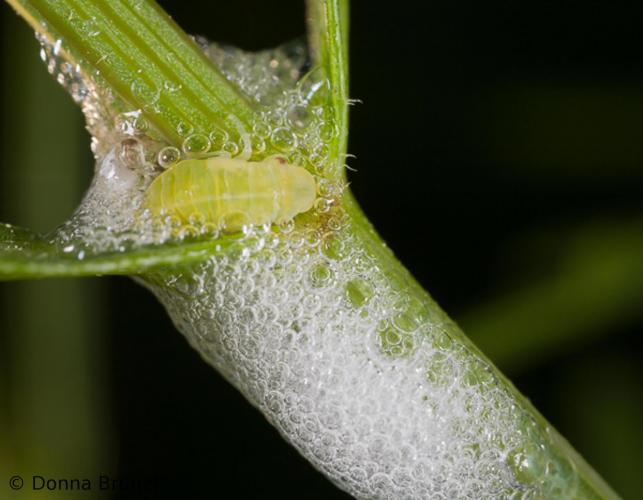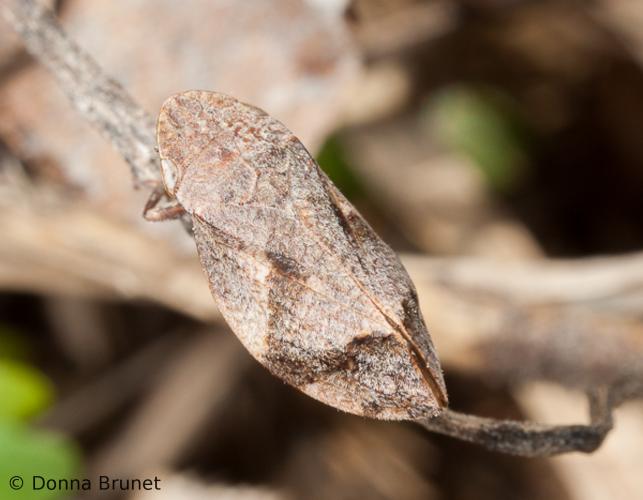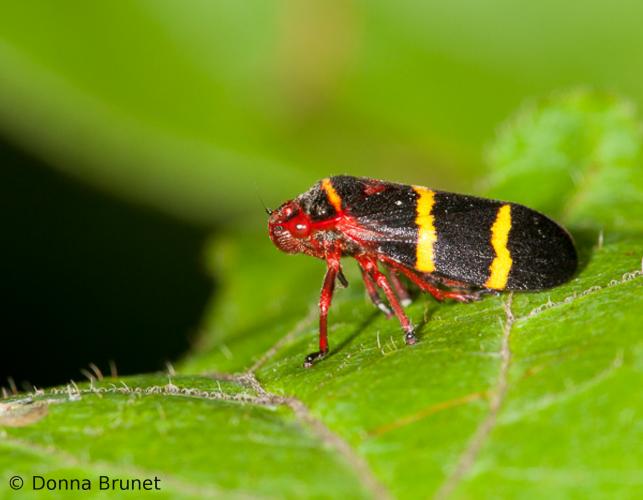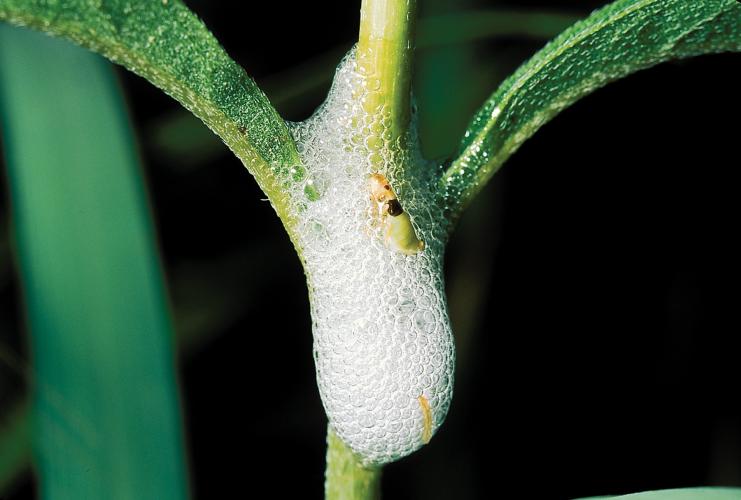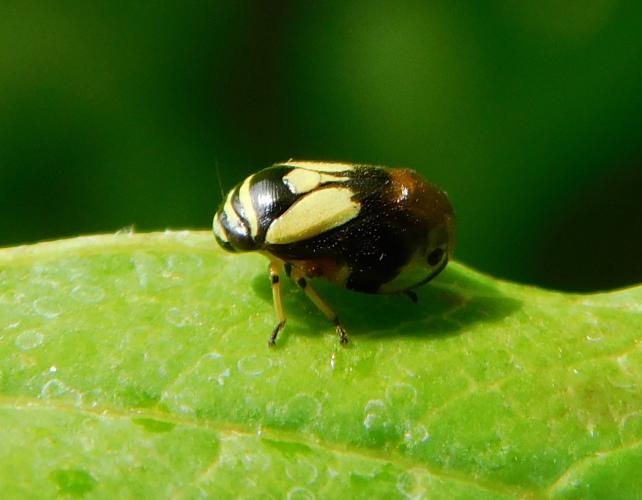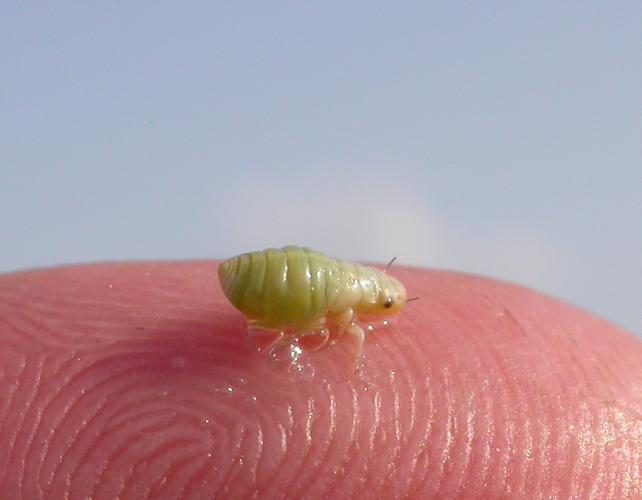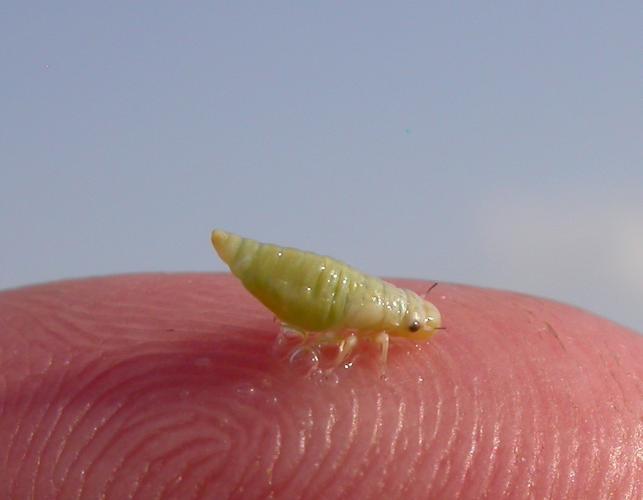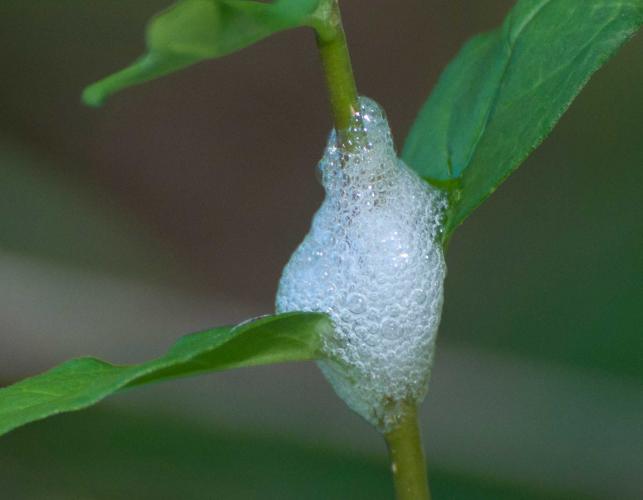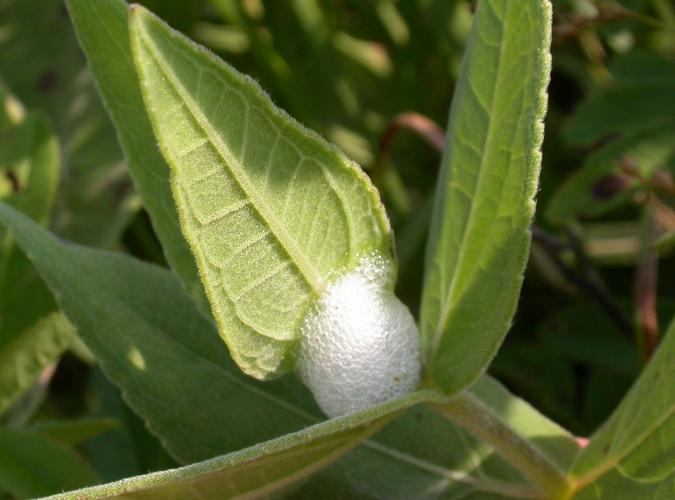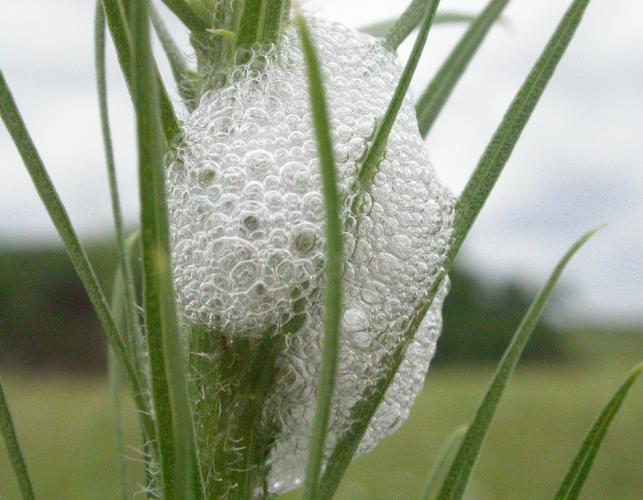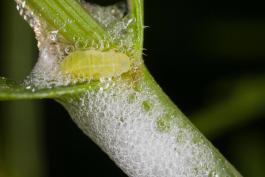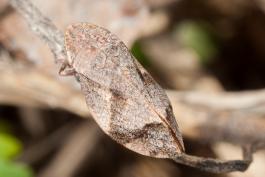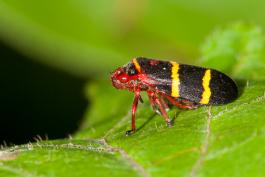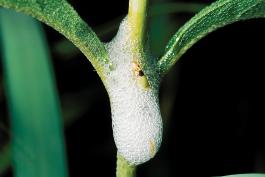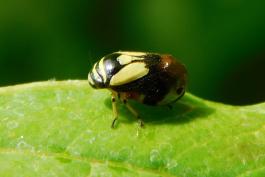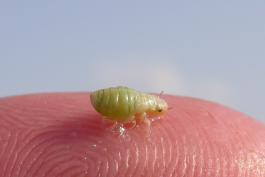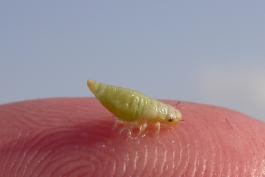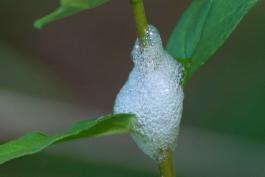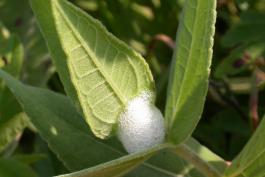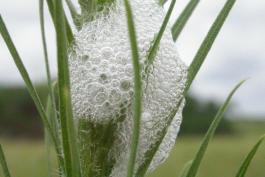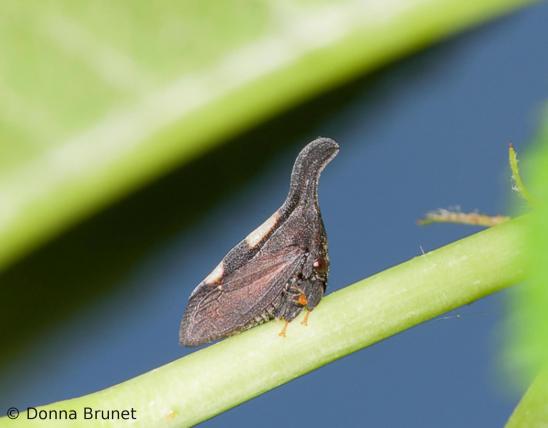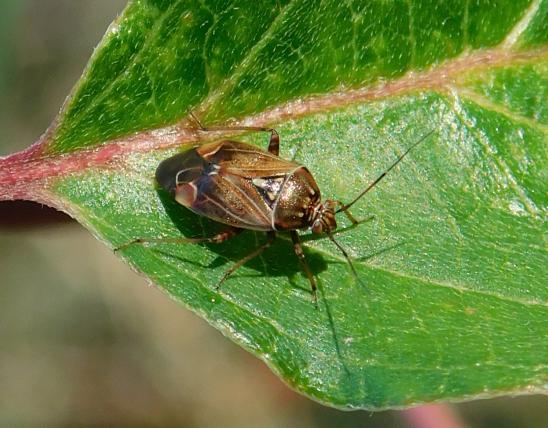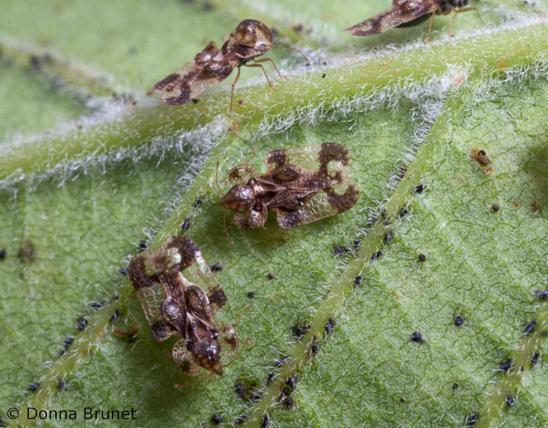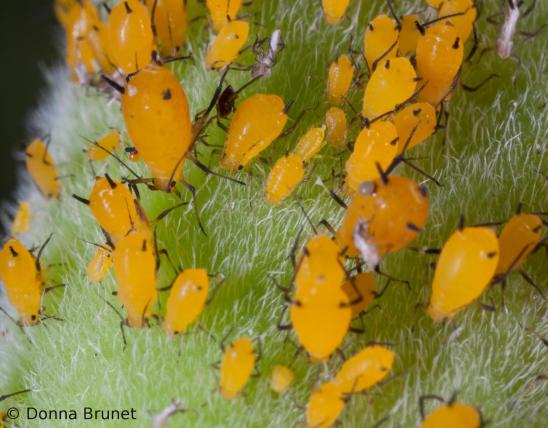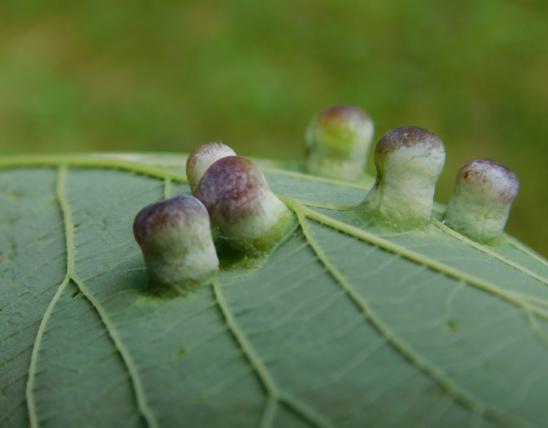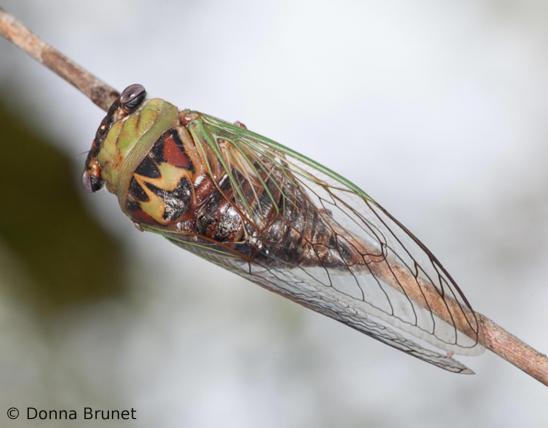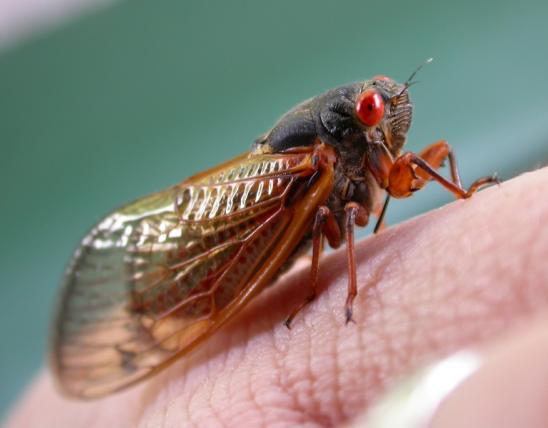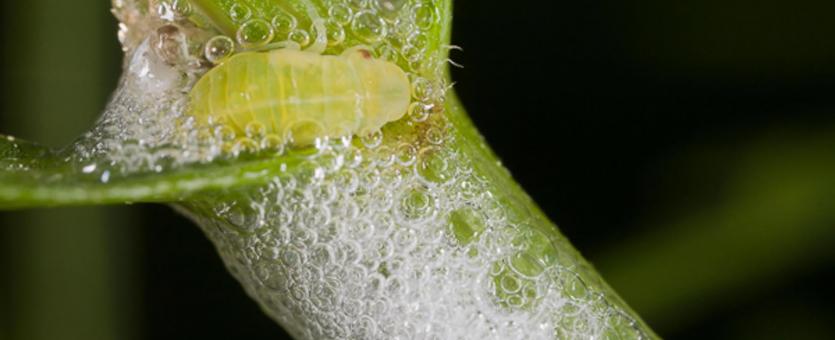
Immature spittlebugs and froghoppers — the nymphs — are what most people notice, since they surround themselves with small foamy masses that resemble spittle. If you are hiking and see what looks like spit on a plant stalk, try gently wiping some of the froth away, and you will see the tiny nymph that produced it: usually pale yellow, green, or tan, wingless, soft, juicy-looking little bugs.
Adults are similar to leafhoppers and treehoppers: small, jumping insects. The tibia (shin-like segment) of each hind leg has 1 or 2 stout spines plus usually a ring of spines at its outer end. The back portion of the body is often wider than the front, making them look a bit like tiny frogs — and they are good jumpers — hence the name “froghopper.”
This group is a superfamily (Cercopoidea) that comprises three families, all of which may be called spittlebugs.
Common species in our area include
- Meadow spittlebug (Philaenus spumarius), in family Aphrophoridae: Color patterns vary dramatically but are usually tan, gray, brown, and/or black; some are solidly colored. Key identifiers include 2 tiny black spots at the head tip (which can resemble nostrils), 2 ridges on the head above the antennae, and raised wing veins. The green nymphs have dark antennae. It feeds on hundreds of different plant species, and it can be an agricultural pest.
- Diamondback spittlebug (Lepyronia quadrangularis), in family Aphrophoridae: Closely resembles 3 others in its genus in North America. All are tan with a darker diamond pattern on the back.
- Dogwood spittlebug (Clastoptera proteus), in family Clastopteridae: adults have a distinctive black and yellow pattern, with yellow stripes on the head, and each forewing bearing a single yellow patch. It feeds on dogwoods (Cornus spp.) and members of the blueberry genus (Vaccinium spp.).
- Two-lined spittlebug (Prosapia bicincta), in family Cercopidae: adults have 2 red, orange, or yellow bands across the wings; body is black; eyes are red; underside rusty. Occasionally they appear all black; to tell these from the red-legged spittlebug, note they lack the fire-red leg bases of that species.
- Red-legged (or black) spittlebug (Prosapia ignipectus), in family Cercopidae: adults are similar to the two-lined spittlebug but are all black, except for the red eyes and bright red leg bases (coxae). Little bluestem (Schizachyrium scoparium) is its primary food plant.
Adult length: less than ½ inch. Varies with species.
Statewide.
Habitat and Conservation
Most people notice froghoppers and spittlebugs in open, grassy areas, but they may occur on plants in a variety of habitats. As the nymphs feed, their house of bubbles offers protection from predators and parasites. It not only conceals them, but also functions as a sticky barrier to deter smaller enemies. At the same time, the foam also helps keep them comfortable. It tempers the effects of hot and cool breezes, keeps their small, fragile bodies moist, and protects them from the sun’s glare.
Nymphs produce the foam from fluid excreted from the anus — it’s mostly plant sap — that joins with thicker substances from nearby glands. As the nymphs produce this viscous fluid, they draw air into a cavity in the abdomen, then expel it with a pumping action into the fluid. The resulting foam has the consistency of beaten egg whites. Nymphs typically position themselves head-down on a plant stalk, and the foam flows over their bodies by the force of gravity.
Sometimes, several nymphs live together within the same large spittle mass.
Food
Like aphids, cicadas, leafhoppers, and many other true bugs (in order Hemiptera), spittlebugs and froghoppers jab their strawlike mouthparts into stalks or leaves and suck juices from plants. They usually feed on grasses, goldenrods, or other nonwoody plants, but some species are found on trees. Their feeding is a rather sedentary process, and the surrounding spittle shelters them while they eat.
Status
The three families of spittlebugs used to be grouped in the same family. Older references may treat them together in the family Cercopidae. Today that group is considered a superfamily, Cercopoidea, which respects their divergent lineages. But these insects all look very similar, and all build bubble shelters.
In North America north of Mexico, there are about 60 species in the two families of so-called spittlebugs, but only 2 species in the family called "froghoppers."
The names are especially confusing, since the nymphs of all three families are generally called spittlebugs, and the adults are all generally called froghoppers.
Life Cycle
Spittlebugs and froghoppers begin as eggs. Upon hatching, they might resemble aphids. As they feed and grow, they periodically molt, shedding their exoskeletons as all insects do. Upon the final molt, the insect exits its spittle mass as a winged, sexually mature adult. At this point, the "froghopper" is very active and can hop great distances relative to its body size, up to about 2 feet straight up. The adults mate, and the females lay eggs inside plant stems, behind leaf sheaths, or in other protective plant material. The eggs overwinter. Some species have multiple broods a year, others just one.
Human Connections
The spitty secretions of these insects are not harmful to plants, but the feeding of the nymphs may damage garden plants. Young trees, strawberries, and members of the bean family, such as clover and alfalfa, are especially prone to infestations. If spittlebugs are bothersome, you can pluck them off by hand or spray them away with a garden hose. Insecticidal soap is another option. Try to combat them while they’re still fragile nymphs, before they become giant-hopping, breeding, egg-laying adults.
Nature can be flat-out weird. It’s one reason nature is so interesting: “You can’t make this stuff up.”
The insect-loving nature writer Edwin Way Teale looked closely at a spittlebug nymph and reported: “Its broad head resembled that of a hippopotamus reduced to minute proportions.”
Ecosystem Connections
Scientists studying the biomechanics of adult froghopper jumps have been impressed with their feats. A froghopper can leap into the air as high as a flea, but it weighs 60 times more than a flea. One study found froghoppers’ velocity, upon takeoff, to be four meters (more than 13 feet) per second. Such a jump requires the froghopper to exert more than 400 times its own body weight.
The reason for these tremendous, sudden leaps is to help the hopper evade its enemies. Considering how fast these insects can jump away, birds, reptiles, amphibians, and mammals would seem to have their dinner disappear into thin air.
The “honeydew” of aphids is similar to the spittle of spittlebugs. Aphids, like spittlebugs, spend most of their time literally attached to their food plants. Both excrete rather large amounts of watery material due to their diet of sap. And both turn their waste into something useful: Spittlebugs turn their excretions into protective bubble houses. Meanwhile, many aphid species have mutually beneficial relationships with ants, which eat the sugary secretions and pay back the aphids by protecting them from enemies.
